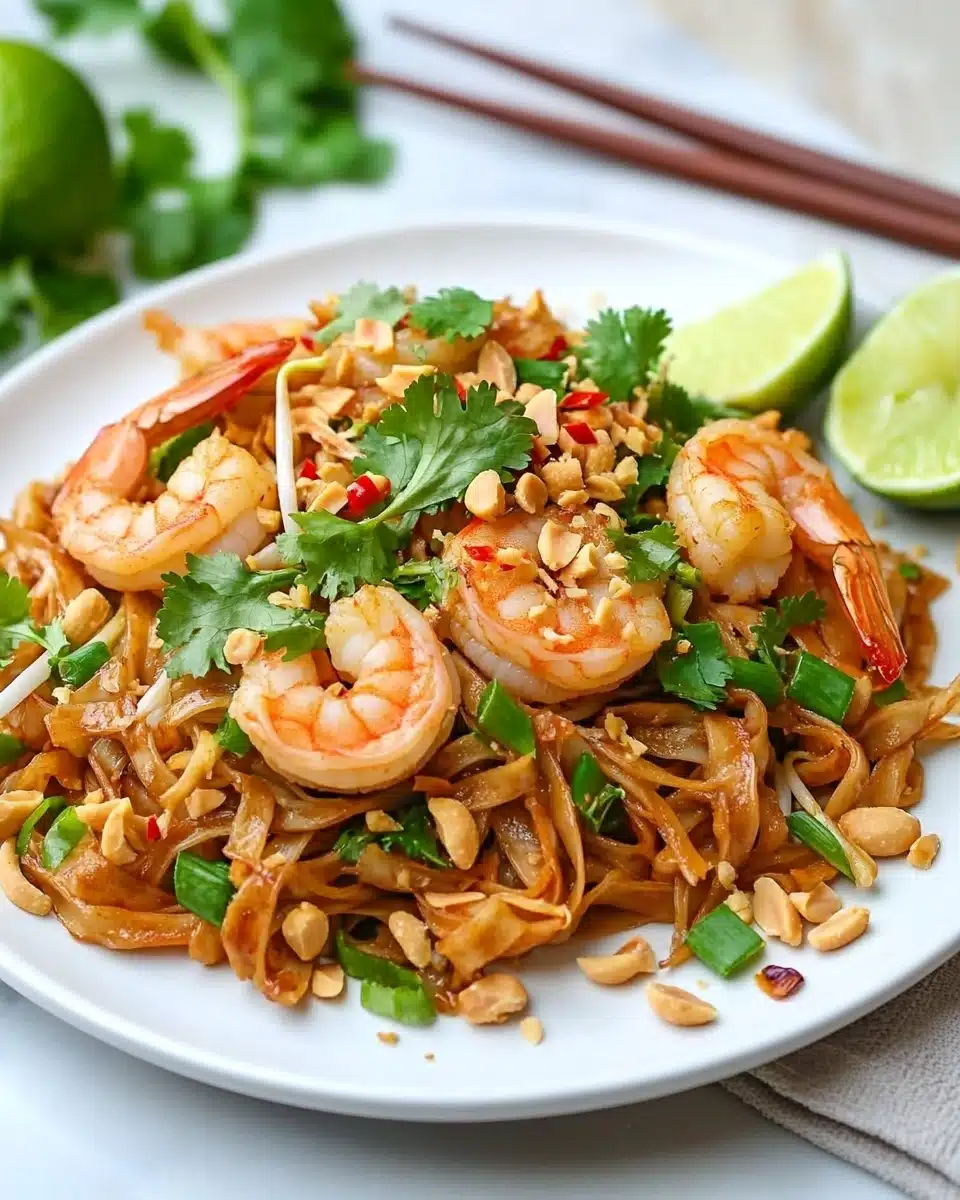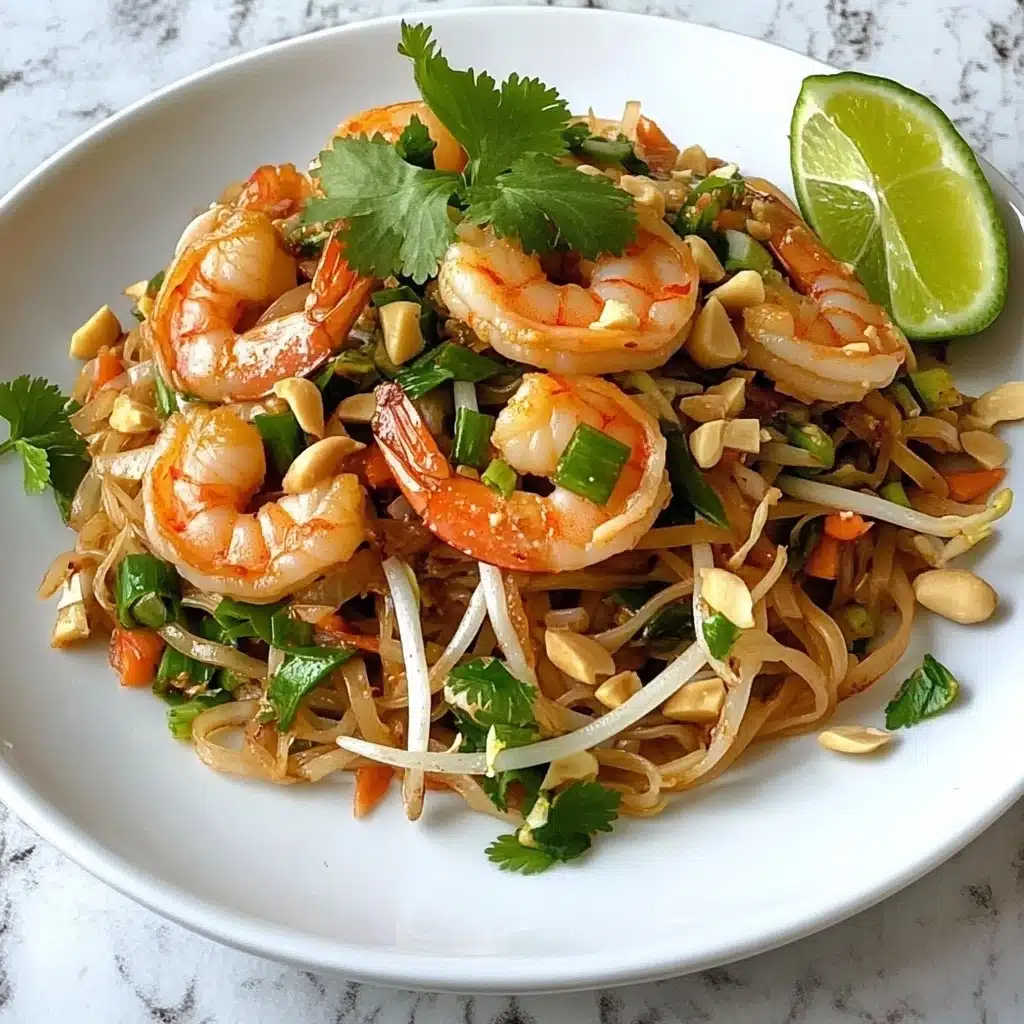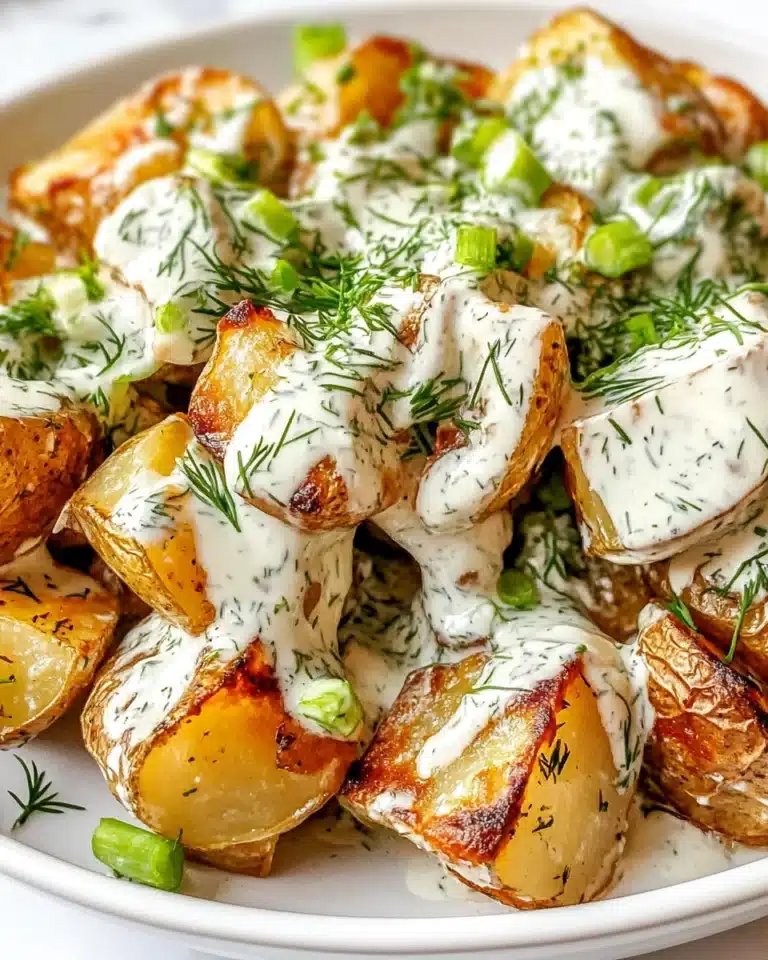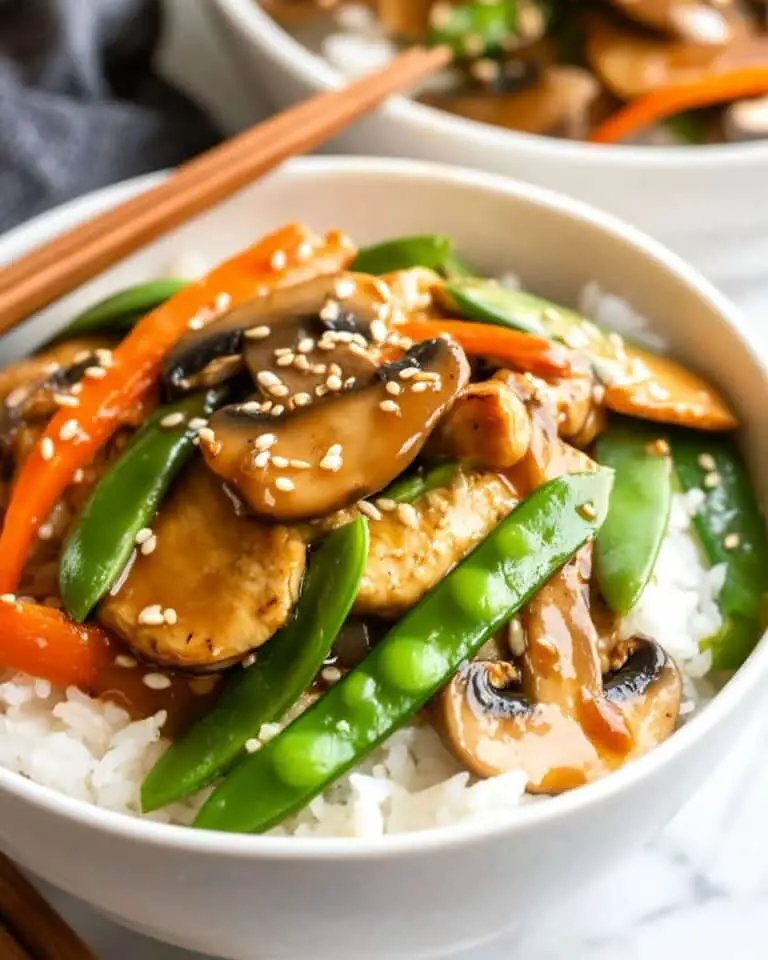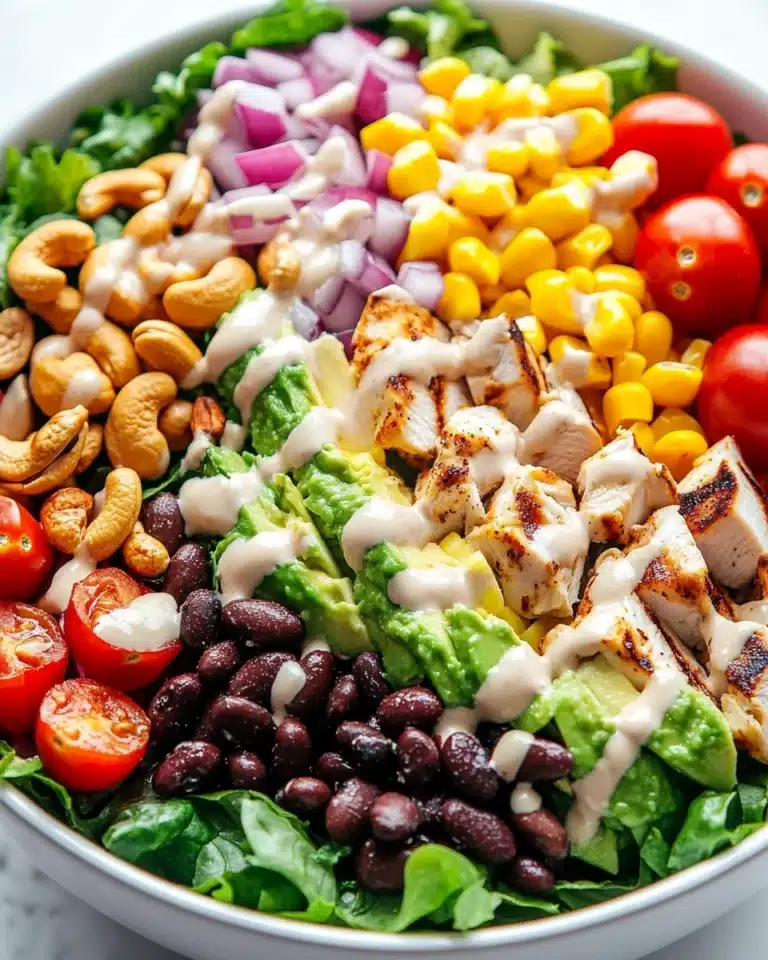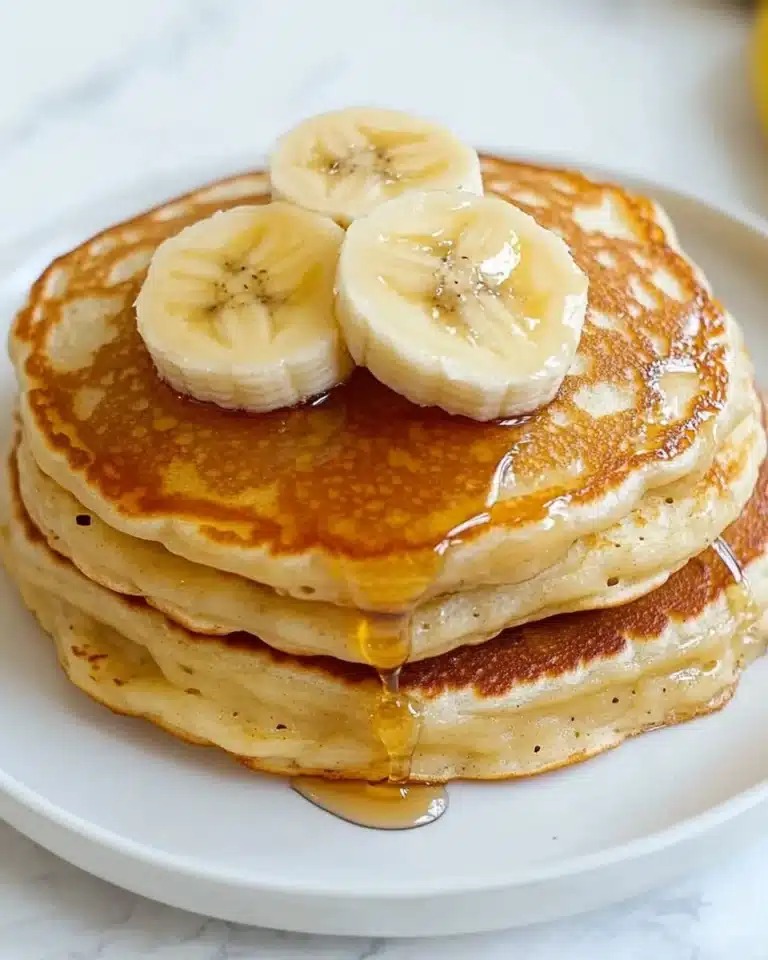If you’re craving a tangy, savory, and satisfyingly crunchy noodle dish, look no further—this homemade Pad Thai brings restaurant flavor right to your kitchen in just 20 minutes. With chewy rice noodles, juicy shrimp, and plenty of fresh garnishes, it’s the kind of meal that feels special but is absolutely doable on any busy night.
Why You’ll Love This Recipe
- Authentic Flavor Made Simple: Get all those classic sweet, tangy, and spicy notes of Pad Thai at home—no special takeout menu needed.
- Quick Enough for Weeknights: From start to finish, you’ll have this noodle bowl on the table in only 20 minutes (really!).
- Totally Customizable: You can swap shrimp for chicken or tofu, and adjust the spice or sweetness however you like.
- Crunch and Freshness in Every Bite: Roasted peanuts, bean sprouts, and herbs pile on the color, texture, and flavor for that signature Pad Thai finish.
Ingredients You’ll Need
Pad Thai is all about balancing simple everyday ingredients in a way that tastes bold and vibrant. Each piece, from the noodles to the herbs, has a role to play in building that iconic harmony of flavors and textures.
- Tamarind concentrate (or lime juice): That signature tangy base—tamarind brings a gentle tartness, but lime juice is a great substitute if you can’t find it.
- Fish sauce (or soy sauce): Salty, deep umami—fish sauce is classic, but if you’re vegetarian or just prefer, soy sauce works beautifully too.
- Palm sugar (or brown sugar): Adds that little touch of caramel sweetness; palm sugar is traditional, but brown sugar melts in with ease.
- Chili sauce (like sriracha): Sweet heat and color that brings the dish alive—adjust this up or down for your perfect spice level.
- Rice noodles: Chewy, slurpable, and made to soak up all that glorious sauce. Medium-width flat noodles work best here.
- Peanut oil: For a subtly nutty base flavor and a nice high smoke point for stir-frying.
- Shrimp (or chicken or tofu): Pick your protein adventure—shrimp for classic, chicken for heartiness, or tofu for a lighter, veggie-packed dish.
- Shallots: Their gentle sweetness is perfect for stir-fries and gives depth to your sauce.
- Garlic: Just a couple cloves, but they make everything about Pad Thai sing!
- Egg: A lightly scrambled egg tucks little bits of richness throughout the noodles.
- Roasted peanuts: Crunchy, toasty, and absolutely essential for real Pad Thai flavor.
- Bean sprouts: Crisp, fresh, and they add that pop of crunch right at the end.
- Green onions: For their freshness, color, and delicate bite.
- Cilantro: Bright, herby, and so classic—it wakes up every bite.
- Lime wedges: A generous squeeze adds even more zing, right before serving.
Variations
Pad Thai is famously flexible, which is a huge part of its charm! Whether you’re working with what you’ve got, aiming for a plant-based meal, or catering to spice lovers, this recipe is incredibly easy to tweak to your own taste.
- Vegetarian Pad Thai: Swap the shrimp for tofu and use soy sauce instead of fish sauce for a satisfying plant-based version—don’t forget extra veggies like snap peas or bell pepper!
- Extra-Spicy: Add a sliced fresh chili or an extra spoonful of chili sauce if you like more heat in your noodles.
- Nut-Free Version: Leave out the peanuts and top with toasted sesame seeds for a similar crunch without any allergens.
- Chicken Pad Thai: Substitute diced chicken breast for shrimp and stir-fry it until golden and cooked through before adding to the noodles.
How to Make Pad Thai
Step 1: Make the Pad Thai Sauce
Start by combining the tamarind concentrate (or lime juice), fish sauce (or soy sauce), palm sugar (or brown sugar), and chili sauce in a small saucepan. Gently heat the mixture, stirring until the sugar dissolves completely. This creates the tangy-sweet-savory foundation that makes Pad Thai irresistible.
Step 2: Soak the Rice Noodles
Follow the package instructions to soak your rice noodles in warm water until they’re just pliable—soft, but not mushy. Test one with your fingers; it should bend easily but still feel a bit firm in the center (they’ll finish cooking in the pan).
Step 3: Sauté the Aromatics & Protein
Heat peanut oil in a large skillet or wok over medium-high heat. Add the shrimp (or chicken or tofu), chopped shallots, and garlic. Sauté for 2–3 minutes, stirring often, just until everything is fragrant and the protein begins to cook through.
Step 4: Add Sauce and Noodles
Pour in your prepared Pad Thai sauce and toss in the soaked noodles. Use tongs to wiggle everything together—the noodles will drink up the sauce and become perfectly flavorful.
Step 5: Scramble in the Egg
Push the noodles to one side of the pan and pour the lightly beaten egg onto the empty space. Let it set briefly, then scramble and fold it through the noodles, so every bite has a pop of richness.
Step 6: Finish with Crunch and Freshness
Add the roasted peanuts and bean sprouts, tossing for just about a minute so everything gets coated with flavor but the veggies stay crisp. Finish with green onions and cilantro, then quickly take your Pad Thai off the heat.
Pro Tips for Making Pad Thai
- Sauce Consistency: Don’t let the sauce get too thick in the pan—a pourable, syrupy texture is what you’re after so it can coat every noodle.
- Noodle Timing: Keep an eye on those noodles—if they’re soaked too long, they’ll go mushy in the skillet, so aim for slightly underdone before they hit the pan.
- Chop Ahead: Have all your aromatics, protein, and garnishes prepped before you start; once you fire up the wok, things move fast!
- Personalize the Heat: If you like your Pad Thai fiery, sprinkle in some chili flakes at the end or serve them alongside for heat lovers at the table.
How to Serve Pad Thai
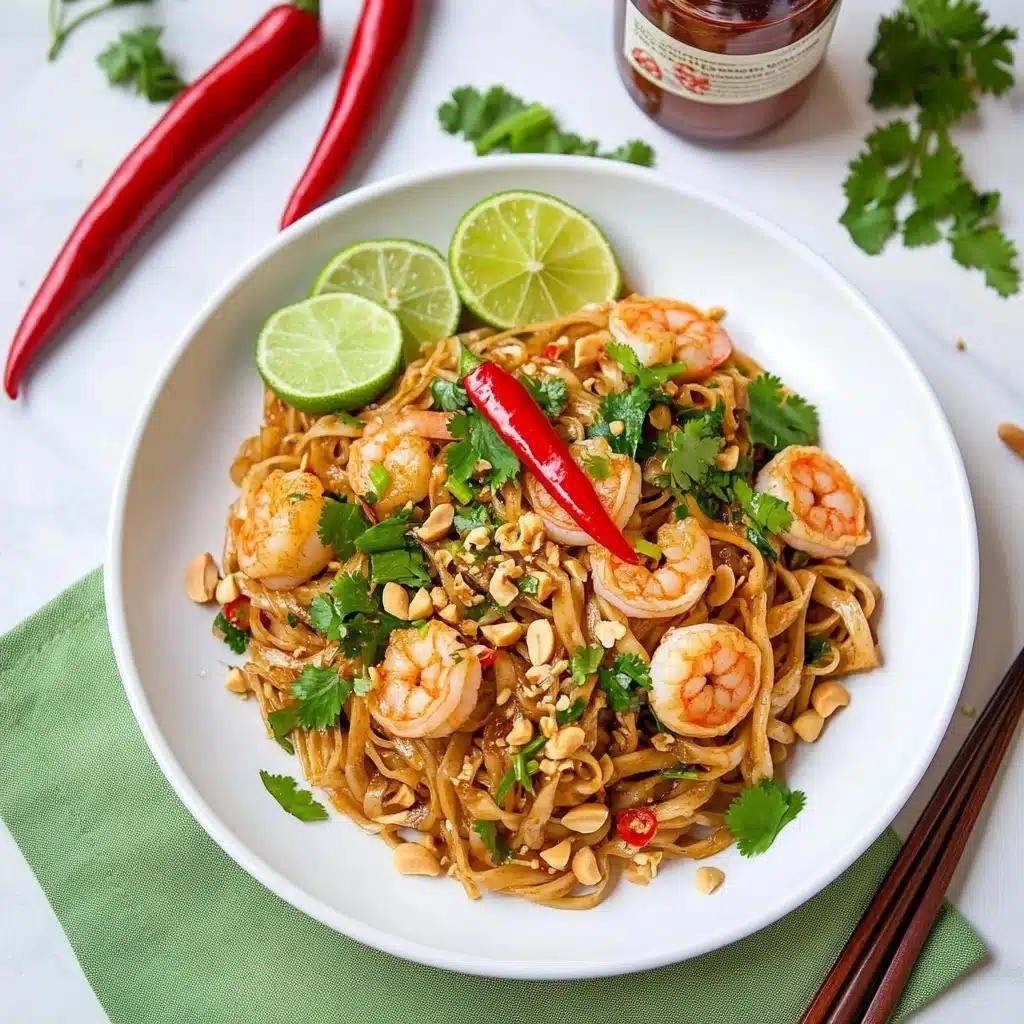
Garnishes
The final step—don’t skip the garnishes! A generous sprinkle of chopped peanuts, an extra shower of sliced green onions, and a big handful of bean sprouts give each bowl of Pad Thai its signature crunch and freshness. Add lime wedges on the side so everyone can squeeze as much zing as they want right before digging in.
Side Dishes
To keep your meal light and vibrant, pair Pad Thai with a crisp cucumber salad or a quick stir-fried vegetable medley. A small bowl of clear broth-based soup or Thai iced tea also rounds things out and makes it feel like a truly complete meal.
Creative Ways to Present
For a fun twist, serve Pad Thai in individual bowls or on banana leaves for a little extra flair. Top each serving with a mini tower of bean sprouts and a scattering of fresh cilantro for a restaurant-worthy look. Colorful chopsticks, lime wheels, or edible flowers turn a weeknight dinner into a special event at home!
Make Ahead and Storage
Storing Leftovers
If you have leftovers, let them cool to room temperature and store them in an airtight container in the fridge. Pad Thai stays tasty for up to two days, though the noodles will soften as they soak up more sauce.
Freezing
Pad Thai isn’t the best candidate for freezing, as the rice noodles can become mushy after thawing. However, you can freeze the sauce and cooked protein separately if you’re planning ahead—just add fresh noodles and garnishes when you’re ready to serve.
Reheating
To revive leftover Pad Thai, splash in a tablespoon of water or broth and toss it in a hot skillet for a couple of minutes, stirring gently. This helps restore the noodles’ texture and brings everything back to life—top with fresh herbs and peanuts before enjoying again.
FAQs
-
Can I make Pad Thai gluten-free?
Absolutely! Traditional Pad Thai is already gluten-free if you use rice noodles and choose either tamari or certified gluten-free soy sauce in place of regular soy sauce. Just double-check your fish sauce for hidden wheat ingredients, and you’re all set.
-
Is there a good substitute for tamarind concentrate?
If tamarind concentrate isn’t available, fresh lime juice mixed with a little extra brown sugar does a lovely job of recreating that sweet-tart flavor that Pad Thai is known for. While the taste isn’t exactly identical, it’s delicious and works in a pinch!
-
What protein is best for Pad Thai?
Pad Thai shines with shrimp, chicken, pork, or tofu, so use whatever you’re in the mood for (or have on hand). Vegetarian and vegan versions are just as wonderful—simply replace fish sauce with soy sauce and use extra veggies or tofu as your star ingredient.
-
Can I double this recipe for a crowd?
You sure can! Just be careful not to overcrowd your skillet or wok—if you’re making a large batch, cook the noodles and sauce in two batches to ensure everything gets that perfect stir-fried texture, then combine before serving.
Final Thoughts
Once you try making Pad Thai at home, it’s hard to go back to takeout! Every bite is full of bright, layered flavors, and the whole meal comes together so quickly—it’s honestly pure weeknight magic. Grab your chopsticks and give it a whirl; you’ll be amazed at how much fun and flavor you can create with just a few easy steps.
Print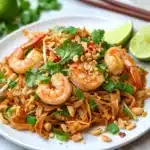
Pad Thai Recipe
- Prep Time: 10 minutes
- Cook Time: 10 minutes
- Total Time: 20 minutes
- Yield: 2 servings
- Category: Stovetop
- Method: Stovetop
- Cuisine: Thai
Description
Experience the bold flavors of this classic Thai dish with our easy Pad Thai recipe. Perfectly balanced sweet, salty, and tangy notes combine with tender shrimp (or your choice of protein) and rice noodles for a satisfying meal that’s ready in just 20 minutes.
Ingredients
Sauce:
- 2 tablespoons tamarind concentrate (or 4 tablespoons lime juice)
- 3 tablespoons fish sauce (or soy sauce)
- 3 tablespoons palm sugar (or brown sugar)
- 1 tablespoon chili sauce (such as sriracha)
Main Dish:
- 6 ounces rice noodles
- 1 tablespoon peanut oil
- 6 ounces shrimp (or chicken or tofu)
- 2 shallots, chopped
- 2 cloves garlic, chopped
- 1 egg, lightly beaten
- 2 tablespoons roasted peanuts, chopped
- 1 cup bean sprouts
- 2 green onions, sliced
- 2 tablespoons cilantro, chopped
- 1 lime cut into wedges
Instructions
- Prepare Sauce: Heat the tamarind, fish sauce, sugar, and chili sauce until the sugar is dissolved.
- Soak Noodles: Soak the rice noodles in water as directed on the package until just pliable.
- Cook Protein: Heat peanut oil in a pan. Add shrimp, shallots, and garlic; sauté for 2-3 minutes.
- Mix Ingredients: Add the sauce and noodles to the pan. Move to the side of the pan.
- Add Egg: Pour in the beaten egg, let it set slightly, then mix into the noodles.
- Finish Dish: Stir in peanuts and bean sprouts; cook for a minute. Add green onions and cilantro; remove from heat.
Nutrition
- Serving Size: 1 serving
- Calories: 570
- Sugar: 14g
- Sodium: 1487mg
- Fat: 16g
- Saturated Fat: 3g
- Unsaturated Fat: 11g
- Trans Fat: 0g
- Carbohydrates: 88g
- Fiber: 4g
- Protein: 22g
- Cholesterol: 192mg

